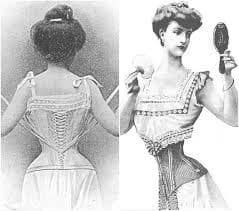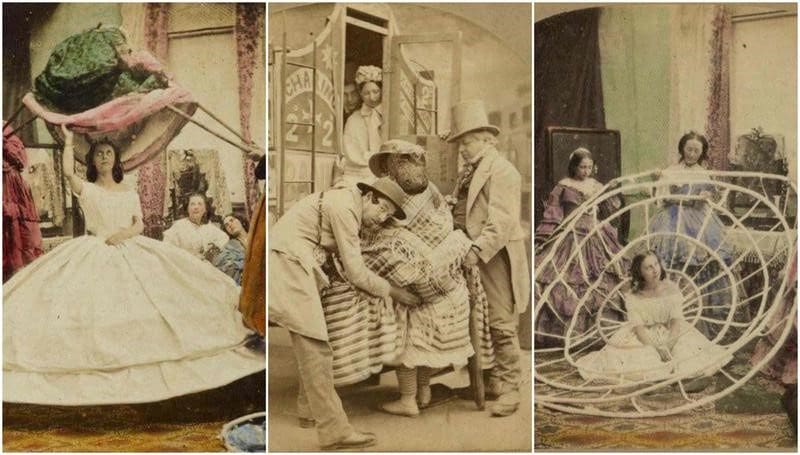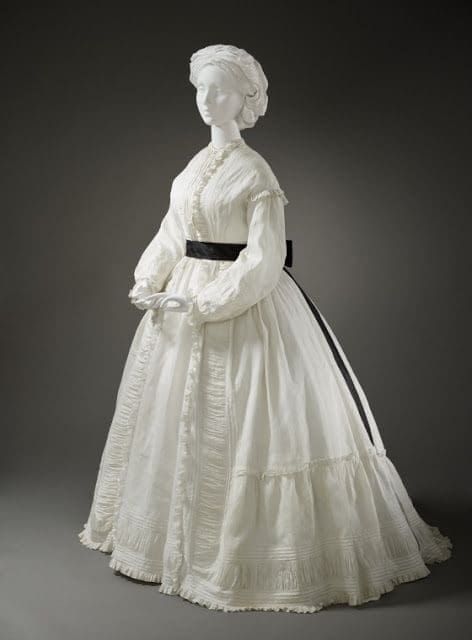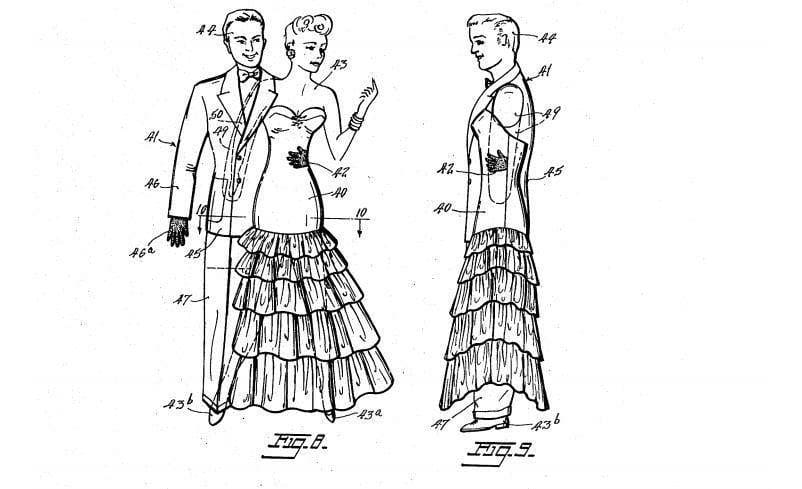Fashionable fabrics and materials have come a long way since the Victorian era—some of them used to be poisonous or even deadly! Keep reading to learn how several fashion trends throughout the 19th and 20th centuries claimed many lives.
Arsenic
During the mid-1800s, a gorgeous green pigment was used to color everything from dresses to hair ornaments, to candles and many decor pieces. Copper and arsenic trioxide or “white arsenic” were mixed to make the in-demand color. Employees in the industry handled the substance with their bare hands, the same hands they ate with and tended their families with.
Symptoms of poisoning included vomiting green water, eyes turning green, seeing green, convulsions, blindness, sores, and foaming at the mouth, nose, and eyes. Research uncovered that the average lady’s headdress contained enough arsenic to poison twenty people.
It wasn’t until the late 19th and early 20th century that lawmakers restricted arsenic in fashion.

(source)
Corsets
In 1903, a woman by the name of Mary Halliday died. The doctor found pieces of her steel corset in her heart. At this time, corsets were essential undergarments for women, but they were being laced so tightly that they were causing constipation, indigestion, internal bleeding, and fainting. It wasn’t unheard of that corset complications sometimes led to death.

(source)
Crinoline skirts
Throughout the mid-1800s, there was an average of 3 deaths per week from crinoline-related fires. This material, used to make skirts appear fuller, was extremely flammable. Crinoline would quickly catch fire when exposed to an open flame, and women would burn to death before anyone could remove the skirts.

(source)
Muslin
Muslin dresses were considered scandalous, as women would often wet their dresses before leaving their home to show off their figures while they were out and about. It wasn’t necessarily the material that was the issue, so much as walking around in wet clothes in winter months. Unsurprisingly, this fashionable practice led to pneumonia and sometimes death.

(source)
Mercury
We’ve all heard the term “mad as a hatter,” but few of us know where it came from. During the late 1800s and early 1900s, hat makers used mercury to make furs stick to hats. Mercury exposure caused trembling and mental disorders, which led to the phrase ‘mad as a hatter.’ Fur hats were in high demand, so mercury was not outlawed, despite its adverse health effects. This is also one of the few instances in which the maker was more at risk than the wearer.

(source)
Radium
After discovering how dangerous radium was in the early 1900s when used to make consumer goods such as clocks and watches, manufacturers were sued by workers for radium poisoning; however, weaving radium into clothing was still considered acceptable as late as the 1950s.
The year was 1951, and the ensemble was known as Loretta Montez’s Dancing Costume. This trick created an illusory dancing partner by placing glowing handprints (actually radium) on a woman’s dress. Take a look at an excerpt from U.S. Patent No. 2,681,449:
“More specifically, the present invention proposes the formation of a dancing costume in the form of a garment to be worn by a dancer and which has radium treated addenda on specified areas of the garment in a manner to glow fluorescently when the garment is viewed in the invisible rays of ultra-violet light.”
The patent application was granted and published on June 22, 1954, and expired in 1971.

(source)
While the fashion industry still has its flaws, it’s safe to say that many things have changed for the better. I think we can all be thankful for passing fads, especially those that involve arsenic, radium, and mercury.
Sources: The Attic, The Pragmatic Costumer, and Medium.






